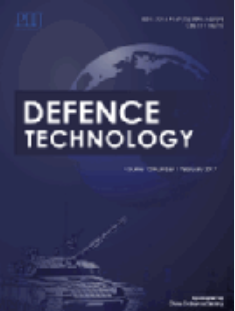Synthesis of energetic materials by microfluidics
IF 5
Q1 ENGINEERING, MULTIDISCIPLINARY
引用次数: 0
Abstract
Energetic materials, characterized by their capacity to store and release substantial energy, hold pivotal significance in some fields, particularly in defense applications. Microfluidics, with its ability to manipulate fluids and facilitate droplet formation at the microscale, enables precise control of chemical reactions. Recent scholarly endeavors have increasingly harnessed microfluidic reactors in the realm of energetic materials, yielding morphologically controllable particles with enhanced uniformity and explosive efficacy. However, crucial insights into microfluidic-based methodologies are dispersed across various publications, necessitating a systematic compilation. Accordingly, this review addresses this gap by concentrating on the synthesis of energetic materials through microfluidics. Specifically, the methods based on micro-mixing and droplets in the previous papers are summarized and the strategies to control the critical parameters within chemical reactions are discussed in detail. Then, the comparison in terms of advantages and disadvantages is attempted. As demonstrated in the last section regarding perspectives, challenges such as clogging, dead zones, and suboptimal production yields are non-ignoble in the promising fields and they might be addressed by integrating sound, optics, or electrical energy to meet heightened requirements. This comprehensive overview aims to consolidate and analyze the diverse array of microfluidic approaches in energetic material synthesis, offering valuable insights for future research directions.
利用微流体技术合成高能材料
高能材料以其储存和释放大量能量的能力为特征,在某些领域,特别是在国防应用中具有关键意义。微流体,凭借其在微观尺度上操纵流体和促进液滴形成的能力,能够精确控制化学反应。最近的学术努力越来越多地利用微流控反应器在高能材料领域,产生具有增强均匀性和爆炸效能的形态可控颗粒。然而,对基于微流体的方法的关键见解分散在各种出版物中,需要系统的汇编。因此,本文将重点介绍通过微流体技术合成含能材料的方法。具体来说,总结了以往文献中基于微混合和液滴的方法,详细讨论了化学反应中关键参数的控制策略。然后,从利弊两方面进行了比较。正如上一节所展示的,在有前景的油田中,堵塞、死区和次优产量等挑战是不容忽视的,可以通过集成声音、光学或电能来解决这些问题,以满足更高的要求。本综述旨在整合和分析含能材料合成中的各种微流控方法,为未来的研究方向提供有价值的见解。
本文章由计算机程序翻译,如有差异,请以英文原文为准。
求助全文
约1分钟内获得全文
求助全文
来源期刊

Defence Technology(防务技术)
Mechanical Engineering, Control and Systems Engineering, Industrial and Manufacturing Engineering
CiteScore
8.70
自引率
0.00%
发文量
728
审稿时长
25 days
期刊介绍:
Defence Technology, a peer reviewed journal, is published monthly and aims to become the best international academic exchange platform for the research related to defence technology. It publishes original research papers having direct bearing on defence, with a balanced coverage on analytical, experimental, numerical simulation and applied investigations. It covers various disciplines of science, technology and engineering.
 求助内容:
求助内容: 应助结果提醒方式:
应助结果提醒方式:


